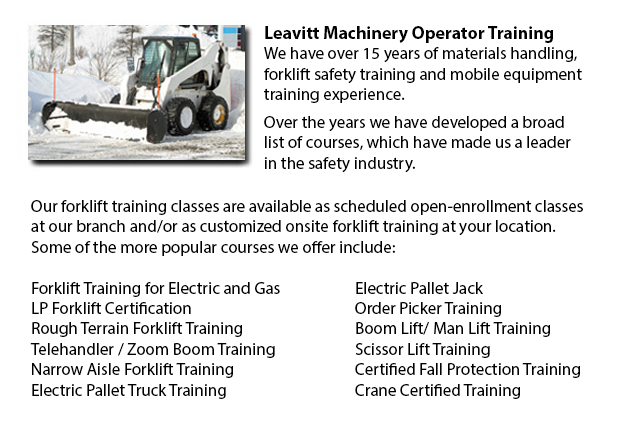
Hamilton Skid Steer Ticket - The lift arms on the skid-steer loader are placed next to the driver together with pivots behind the driver's shoulders. These features makes the skid-steer loader different compared to the traditional front loader. Due to the operator's closeness to moving booms, early skid loaders were not as safe as conventional front loaders, especially during the operator's exit and entry. Modern skid-steer loaders at present have many features to protect the driver including fully-enclosed cabs. Similar to several front loaders, the skid-steer model could push materials from one place to another, is capable of loading material into a trailer or a truck and could carry material in its bucket.
Operation
There are various times where the skid-steer loader could be used rather than a large excavator on the job location for digging holes from within. To start, the loader digs a ramp to be used to excavate the material out of the hole. As the excavation deepens, the machinery reshapes the ramp making it longer and steeper. This is a remarkably helpful way for digging underneath a structure where there is not sufficient overhead clearance for the boom of a large excavator. Like for instance, this is a common situation when digging a basement below an existing house or building.
The skid-steer loader accessories add much flexibility to the equipment. For instance, conventional buckets on the loaders could be replaced accessories powered by their hydraulics comprising snow blades, cement mixers, pallet forks, backhoes, tree spades, sweepers and mowers. Various other popular specialized attachments and buckets include trenchers, angle booms, dumping hoppers, wood chipper machines, grapples, tillers, stump grinders rippers, wheel saws and snow blades.
History
In 1957, the very first 3-wheeled, front-end loader was invented in Rothsay, in the state of Minnesota by brothers Louis and Cyril Keller. The brothers invented the loader so as to help a farmer mechanize the method of cleaning turkey manure from his barn. This machine was compact and light and consisted of a rear caster wheel which allowed it to turn around and maneuver within its own length, allowing it to carry out the same tasks as a conventional front-end loader.
The Melroe brothers of Melroe Manufacturing Company in Gwinner, N.D. obtained during the year 1958, the rights to the Keller loader. The business then hired the Keller brothers to help with development of the loader. The M-200 Melroe was actually the result of this partnership. This particular model was a self-propelled loader that was launched to the market during nineteen fifty eight. The M-200 Melroe featured a two independent front drive wheels, a rear caster wheel, a 12.9 HP engine and a 750 lb lift capacity. By nineteen sixty, they replaced the caster wheel along with a rear axle and introduced the first 4 wheel skid steer loader that was called the M-400.
The M-400 soon became the Melroe Bobcat. usually the term "Bobcat" is utilized as a generic term for skid-steer loaders. The M-440 had an 1100 lb rated operating capacity and was powered by a 15.5 HP engine. The business continued the skid-steer development into the middle part of the 1960s and launched the M600 loader.
-
Hamilton Aerial Platform Training
Hamilton Aerial Platform Training - Aerial hoists are able to accommodate various odd jobs involving high and hard reaching spaces. Often utilized to perform routine repair in structures with high ceilings, prune tree branches, hoist heavy shelving u... More -
Hamilton Heavy Equipment Operator Certification
Hamilton Heavy Equipment Operator Certification - The heavy equipment operator is a person who manipulates the controls and drives different kinds of big machinery. Heavy machinery is most commonly utilized on construction sites to deliver supplies t... More -
Hamilton Scissor Lift Ticket
Hamilton Scissor Lift Ticket - Scissor lifts have greatly benefited construction operations in view of the fact that the job that used to require much effort and lots of people, can now be completed utilizing the scissor lift truck and only one indiv... More -
Hamilton Forklift Certification Courses
Hamilton Forklift Certification Courses - Forklift certification courses really help to make sure that businesses utilizing forklifts, comply with the regional and local rules. The drivers of the forklift should undergo forklift certification prior t... More -
Hamilton Forklift Training Program
Hamilton Forklift Training Program - The forklift is a common powered industrial vehicle which is in wide use these days. They are occasionally called jitneys, hi los or lift trucks. A departments store would use the forklift to unload and load merch... More -
Hamilton Forklift License
Hamilton Forklift License - Obtaining a forklift license or forklift certification in North America would require the trainee to do hands-on training in addition to classroom instruction. The state, provincial and federal regulatory bodies are respon... More -
Hamilton Manlift Operator Certification
Hamilton Manlift Operator Certification - Our aerial lift and scissor platform training and certification empowers participants with a general understanding and knowledge of the efficient and safe use of "Power Operated Mobile Work Platforms," under... More -
Hamilton Forklift Operator Certification
Hamilton Forklift Operator Certification - Forklift operator certification is usually needed for employees working in industrial, warehouse or construction setting to guarantee the safe utilization of forklifts. Workplace training has to follow a met... More

Forklift Certification Hamilton
TOLL FREE: 1-888-254-6157
Hamilton, Ontario
forkliftcertificationhamilton.com
Email Us
About Us


